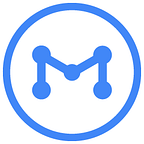Introduction to Measurable Data Token(4/5) — How it Works
Today we are elaborating how MDT works by a specific use case
Measurable Data Token (MDT) is a token based on Ethereum, and is the most important element in this new data exchange ecosystem. Smart contracts, which are applications stored in the Ethereum blockchain, are constructed by data providers, data buyers and the MDT platform. Using cryptographically secure token contracts helps enforce performance of the contracts. To precisely elaborate the technology of the MDT ecosystem,
Here’s an example use case of how it works:
Open Messenger is an email messenger app that helps users manage their email as simply as messaging on mobile. As a data provider, it collects and analyzes users’ anonymous email receipt data, and transforms it into valuable business insights, which updates daily right after the purchases happen.
Gaming company J is a data buyer, who constantly look for competitors’ sales trends for decision making. They discover that Open Messenger has published a new data dashboard product called “Sales Trends for Game P and Game C in 2016” that they are interested in purchasing.
After Company J clicks the Purchase button on Open Messenger’s website, this request notifies both the Open Messenger and the Measurable Platform.
Thereafter, Measurable Platform constructs a Smart Contract which includes:
- Public User Key, which means all the invoked data points and the respective public user key
- User reward percentage: u %
- Data Dimensions: iTunes email receipts, quantity…
- Transaction Price:Va MDT
- Transaction Condition: Accepts deal within y hours
Data Buyer sends Va MDT to the contract address and then gets the preview access to the product requested. According to the conditions in the smart contract, Company J needs to decide if they accept the deal within y hours. Within y hours, J believes that the data is valid and the deal is accepted. After the acceptance, the Smart Contract executes, and simultaneously J gets the full access to the product.
- Measurable Platform gets calculation fee: Vm = Va * x%
- User reward total is Vu = (Va-Vm) * u%, each user’s reward varies depending on their contributing points amount
- Open Messenger as a Data Provider gets the remainder Vo = Va — Vm — Vu
If J does not accept the deal in this case, and believes that the data is invalid or problematic, the transaction will automatically go through arbitration on the Measurable Platform. If the arbitration result is deal accepted, the Smart Contract executes. If the result is deal failed, Company J still needs to pay x% calculation fee to the Measurable Platform, and the balance returns to the J Company.
It is very likely that for any early adopter, the number of data points being invoked is not large enough to get considerable rewards.For some users, it may take longer time to reach the amount other users only take several days to achieve. After all, the data points every user creates are different.
To solve the potential issue of micropayment and delay in transaction confirmation times (for example, when the rewarded MDT is too small that it fails to cover the cost of Ethereum transaction), MDT will first introduces a reward deposit pool where it stores users’ micro-rewards until the quantity reaches an appropriate threshold to be sent to the user.
Users will be notified in their wallet about the number of contributed data points and the amount of reward earned. Only once the rewarded MDT reaches a validated amount will the wallet be activated to use. Users can transparently check reward income and data points in real time to monitor their status in the MDT ecosystem.
For example, User F downloads the Open Messenger app and opts in to join the MDT data exchange ecosystem. In the first week, his email receipt data is invoked so his wallet displays the current rewarded MDT amount and the data points he has shared so far. The number is below the threshold to activate his wallet, but three months later, the number reaches the verified amount and User F is able to withdraw, make purchases, and transfer his MDT.
We have witnessed many progress in the areas of efficient payments, scalability and more improvements from projects like the Casper Research, the Raiden Network, Tendermint / Cosmos , Graphene, and Decentralized cloud computing Dfinity (Ethereum Blog 2017). To enable a more scalable, cost effective system, MDT looks forward to working with the blockchain community on testing and improving these new technologies in production.
Measurable Data Token (MDT) connects users, data providers, and data buyers and denominates the value of data. It compensates users for sharing anonymous data points while providing data buyers and providers with a more efficient trading model.
*This is the 4th blog in a series of five on What MDT is and How it works. Stay tuned on the following updates!
Read the MDT WhitePaper: http://measurable.net/docs/whitepaper.pdf
Website http://measurable.net/
Twitter https://twitter.com/MeasurableData
Facebook https://www.facebook.com/measurabledata
Telegram https://t.me/measurabledata
Bitcointalk https://bitcointalk.org/index.php?topic=2291186.0
